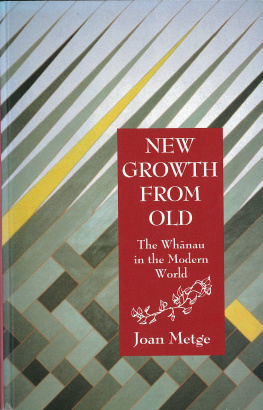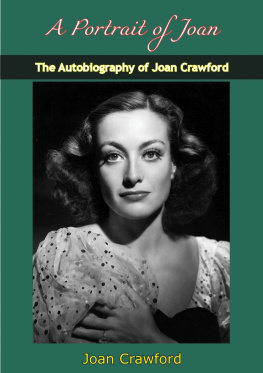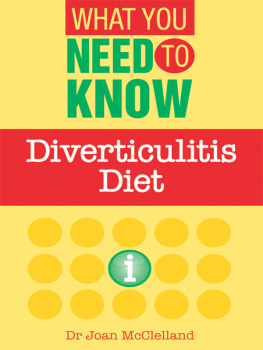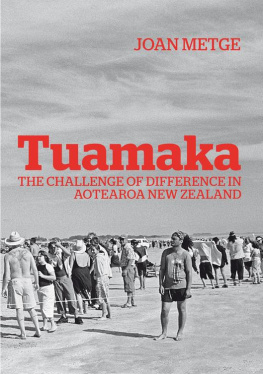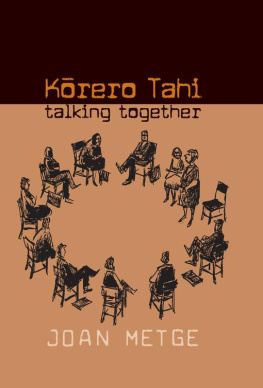Joan Metge - New Growth from Old: The Whānau in the Modern World
Here you can read online Joan Metge - New Growth from Old: The Whānau in the Modern World full text of the book (entire story) in english for free. Download pdf and epub, get meaning, cover and reviews about this ebook. year: 1995, publisher: Victoria University Press, genre: Home and family. Description of the work, (preface) as well as reviews are available. Best literature library LitArk.com created for fans of good reading and offers a wide selection of genres:
Romance novel
Science fiction
Adventure
Detective
Science
History
Home and family
Prose
Art
Politics
Computer
Non-fiction
Religion
Business
Children
Humor
Choose a favorite category and find really read worthwhile books. Enjoy immersion in the world of imagination, feel the emotions of the characters or learn something new for yourself, make an fascinating discovery.
- Book:New Growth from Old: The Whānau in the Modern World
- Author:
- Publisher:Victoria University Press
- Genre:
- Year:1995
- Rating:4 / 5
- Favourites:Add to favourites
- Your mark:
- 80
- 1
- 2
- 3
- 4
- 5
New Growth from Old: The Whānau in the Modern World: summary, description and annotation
We offer to read an annotation, description, summary or preface (depends on what the author of the book "New Growth from Old: The Whānau in the Modern World" wrote himself). If you haven't found the necessary information about the book — write in the comments, we will try to find it.
New Growth from Old: The Whānau in the Modern World — read online for free the complete book (whole text) full work
Below is the text of the book, divided by pages. System saving the place of the last page read, allows you to conveniently read the book "New Growth from Old: The Whānau in the Modern World" online for free, without having to search again every time where you left off. Put a bookmark, and you can go to the page where you finished reading at any time.
Font size:
Interval:
Bookmark:
INTRODUCTION
PHOTOGRAPHS
All photographs printed with permission of whnau representatives
FIGURES
ILLUSTRATIONS by TOI TE RITO MAIHI
Waiata o te Harakeke cover
I tpaea tnei pukapuka
hei whakamaharatanga
ki nga kuia n Te Rarawa ki Ahipara
| Pearl Arano | Ihapera Nathan |
| Unaiki Kamariera | Ngaire Snowden |
| Mereana Kerehoma | Harriet Te Paa |
| Lena Kovacevich | Miriama Williams |
Moori (Maudie) Williams
Nu i whatu te kkahu, he tniko tku.
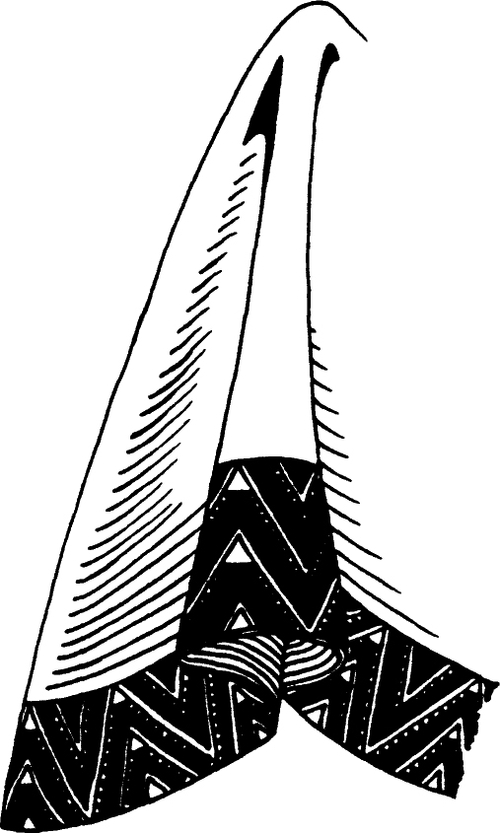
Over the years during which this book has been in preparation, a large number of Mori have contributed to the development of my understanding of the whnau. In the text I describe them as kai-whakaatu, people who have both informed and enlightened me. In deference to their own wishes, I shall not identify them individually by name but, speaking of and to them as a group, I record my warmest aroha and appreciation for the generosity with which they have admitted me to their family circles over the years, included me in their whnau gatherings, talked with me about their experience of whnau, and shared the insights gained from reflecting upon it. Above all, I thank them for the readiness with which they gave me approval to give depth to my text by quoting their words and telling their stories.
I have dedicated this book to nine kuia of this company who have died in recent years. The whakatauk I quote in the dedication applies equally to all my kai-whakaatu, living and dead. Truly this has been a cooperative enterprise.
Nu i whatu te kkahu, he tniko tku.
You wove the body of the cloak, I made the tniko.
The tniko border of a kaitaka cloak catches the eye with its bright colours and distinctive pattern; the plain body has a quieter beauty inhering in the regular weaving of extremely fine fibres. Each important and beautiful in its own way, the two parts complement each other, together forming a distinctive whole.
He taonga an t te iti, he taonga an t te rahi, waiho m te aroha hei paihere, kia puta ai te painga ki ng uri whakatupu.
While the research for this book had its genesis in Ktare in the 1950s, most of it was carried out while I was fifth Captain James Cook Fellow in 198183. I am truly grateful to the officers of the Royal Society of New Zealand for the award of this fellowship and for their support during my tenure.
To Rima Eruera, Shane Jones, Keri Kaa, Haimona Snowden and Tawhao Tioke, I am indebted for additions to my treasury of whakatauk, for help in teasing out their implications, and for permission to use those which are particular taonga of their iwi.
While I cannot name names for reasons of confidentiality, I sincerely thank those whnau representatives who supplied photographs of whnau activities and gave me permission to use them.
I thank Toi Te Rito Maihi for her enthusiastic response to my invitation to illustrate whakatauk about the whnau and to allow her painting Waiata o te Harakeke to be used for the cover. Her imaginative illustrations have delighted and inspired me.
I record my warm gratitude to my friends and fellow scholars, Robin Fleming, Keri Kaa, Wiremu and Jossie Kaa, Areta Koopu, Erihapeti Murchie, George Parekowhai, David Ross, Anne Salmond and Jeff Sissons, whose constructively critical comments helped greatly to improve my draft text.
I am also indebted to the editors of Victoria University Press, Fergus Barrowman and Rachel Lawson, for their unfailing support and for their patience in dealing with a text which kept growing.
Joan Metge
Wellington
October 1995
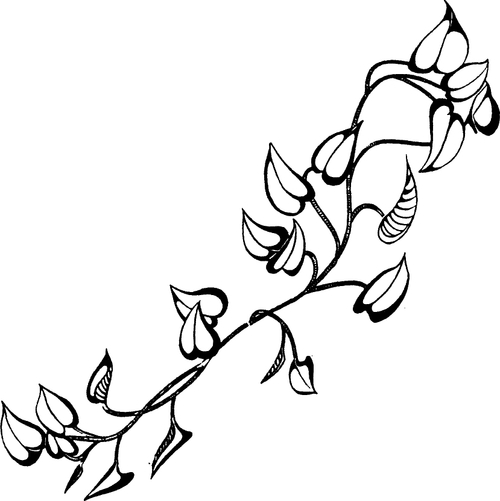
I build something up
Complicated and complex
I hope
But alas!
Nothing so deep emerges.
Only simple lines
hacked out of a piece
of wornout lino
that curve and dip to a traditional line
Almost moronic
in their upward
outward bend to the left
to the right
What the hell!
Why should I lie
to myself?
I am what I am
Carved out of a line
of heavy footed deep rooted
simplicity
Wanting to love well
eat well die with the thought of
kumara vine stretched out
reproducing an image
many imagesof itself,
its hopes
drenched in warmth
with roots forever seeking
the sun.
Arapera Hineira Kaa (1955: 18)
Hutia te rito o te harakeke
kei hea te komako e ko?
Rere ki uta
Rere ki tai.
Ki mai koe ki au,
He aha te mea nui o te Ao?
Maku e ki,He tangata, he tangata, he tangata.
Ko nga korero e rarangi ake nei, i roto i tenei pukapuka.
Kei te tino tautokotia e Te Runanga O Te Rarawa.
Ko te Kai Tuhi, Ko Dr Joan Metge.
He whaea tenei kua whitikitia ki roto e te iwi o Te Rarawa.
He whaea rangimarie, aroha, wairua pono
Ko te tino hohonutanga o nga korero
E pa ana ki te whanau.
If the centre shoot of the flax bush were plucked,
Where would the bellbird sing?
You fly inland
You fly to sea.
You ask me,
What is most important in the world?
I would say,Tis peopletis people, tis people.
Dr Joan Metge has been associated with Te Runanga O Te Rarawa for fourteen years and we have come to know her as a friend. She has been associated with the Iwi of Te Rarawa even longer about forty years.
A careful listener, deep thinker, quiet speaker, and a humble, caring person among us, Joan has been claimed as one of our own. We treat her as part of the wider Whanau and Hapu network of Te Rarawa.
So we were happy that her newest book is about that universal and basic building block of all people everywherethe Whanau.
Like us Joan knows that, just as te rito o te harakeke is the source for the flaxs new growth, the Whanau is the source for societys growth.
It is a universal theme, as is the truth that if the source or the spring is poisoned then so is the mainstream. Conversely if the springs are clean and clear, so is the mainstream.
Knowing Joan and her works, I and Te Rarawa feel this book will go some way toward a cleaner, clearer spring of society within Aotearoa, and a flourishing from the heart of new growth.
No reira e nga Iwi nga hau e wha. Te Manaakitanga o Te Matua Nui i te rangi ki a koutou katoa.
Na

John Campbell
Chairman of Te Runanga O Te Rarawa
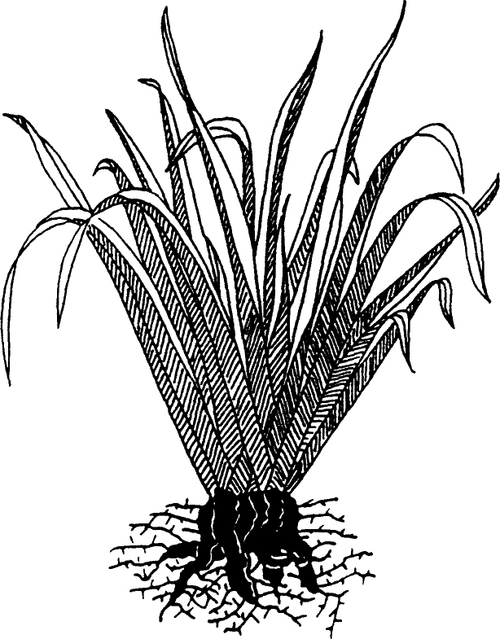
Parapara waerea a ururua,kia tupu whakaritorito te tupu o te harakeke.
Clear away the overgrowth, so that the flax will put forthmany young shoots.
F lax bushes are a familiar feature of the New Zealand landscape, growing wild in swamps and wet alluvial soils, carefully bred and tended in gardens and weavers plantations. Each bush is made up of long, swordlike flax blades growing in fans. The roots of these fans are so entwined that they cannot be separated except with a sharp spade. Growth takes place at the centre of each fan, where the new shoot (rito) emerges between its two predecessors.
Font size:
Interval:
Bookmark:
Similar books «New Growth from Old: The Whānau in the Modern World»
Look at similar books to New Growth from Old: The Whānau in the Modern World. We have selected literature similar in name and meaning in the hope of providing readers with more options to find new, interesting, not yet read works.
Discussion, reviews of the book New Growth from Old: The Whānau in the Modern World and just readers' own opinions. Leave your comments, write what you think about the work, its meaning or the main characters. Specify what exactly you liked and what you didn't like, and why you think so.

